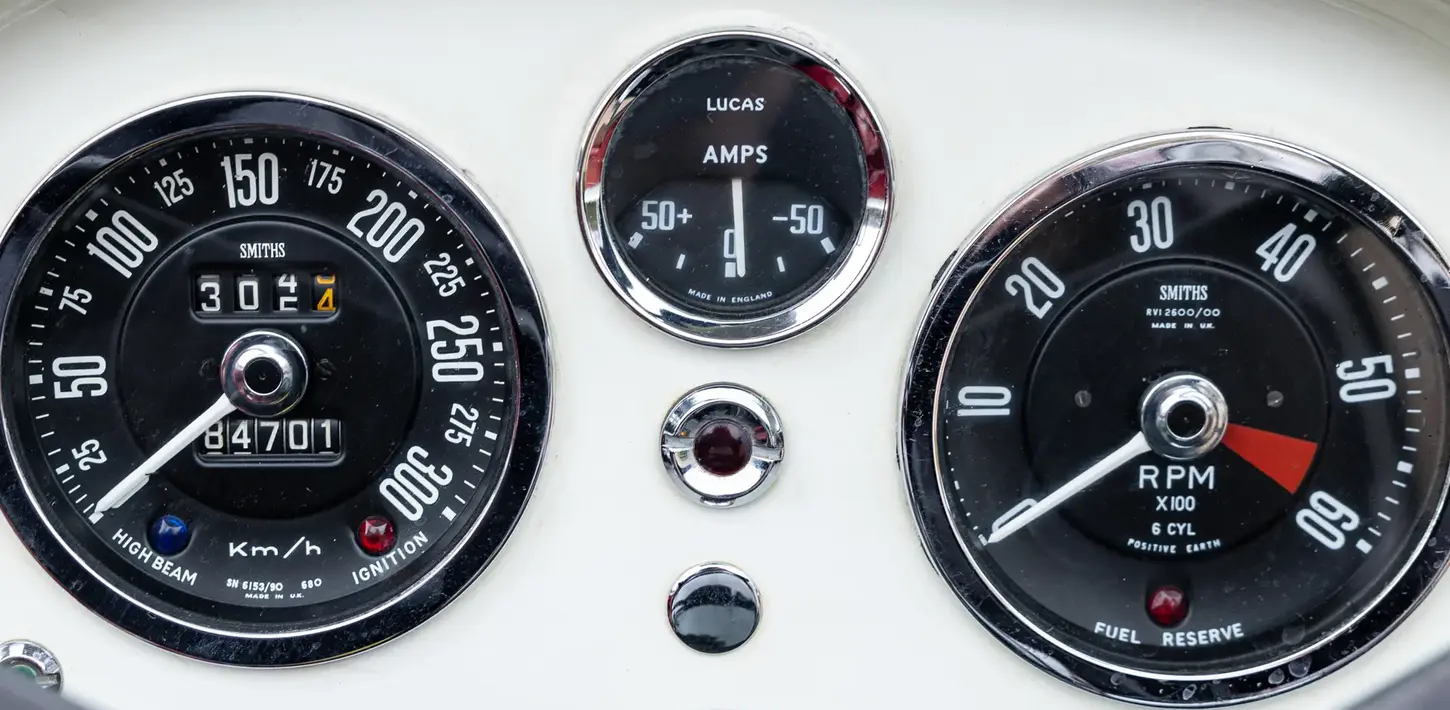Mention the Aston Martin DB5 and the epithet “the most famous car in the world” frequently follows soon after. Naturally, that reputation is largely owed to the model’s seminal role in the third James Bond picture Goldfinger, where a Q Branch-equipped Silver Birch example co-starred alongside Sean Connery for the attempted getaway from Auric Enterprises.
The Aston reprised its role in the next instalment of the series, Thunderball. The inspired decision to return the DB5 to the silver screen during the 1990s for the Pierce Brosnan era of the franchise, before making it the personal car of Daniel Craig’s Bond, only enhanced the celebrity status.
Surely the most memorable gadget fitted to 007’s DB5 was the ejector seat. And while the secret agent had to make do with a detachable panel in the roof, the Aston Martin Newport Pagnell factory did construct 123 true DB5 Convertibles between 1963 and 1965. The open-top car was underpinned by Touring of Milan’s lightweight tubular Superleggera coachwork construction method to support aluminium-alloy body panels, as deployed with the hardtop. The DB5 Convertible also featured the famous 4.0-litre straight-six engine, rated at 282 brake horsepower for a 148 mph top speed.
Of the 85 right-hand-drive DB5 Convertibles constructed, chassis DB5C/2122/R is believed to be the penultimate example built, according to correspondence from Aston Martin Tickford (available to view on file). When this car first rolled off the production line, it is recorded as having been painted in Goodwood Green. Due to the ongoing demand for DB5 Convertibles when production was nearing its end, the Hertiage department at Aston Martin Works notes that chassis 2122/R was then changed to Platinum, and had its Borg Warner automatic gearbox replaced with a ZF five-speed manual, thus satisfying the precise requirements of its first owner. The red Everflex soft-top and red Connolly leather interior carried over unchanged.
This car was also equipped from the factory with the optional chrome wheels, Motorola radio, Marchal fog lamps, plus a driver’s seat pan lowered by one inch. As recorded in the original June 1966 invoice, it was sold new via HR Owen of Sloane Street, London for the sum of £4,481 to Mr Frederick Weldon of Sherwood, Nottinghamshire. He retained the DB5 until 1983, at which point the car was bought by Mr Dirk Ebeling, a co-founder of the Aston Martin Owners’ Club Germany. The following year, this car was sold to Switzerland. An invoice from official Aston Martin workshop Knecht & Ritter, Fällanden, dated 1989, indicates that at this point the speedometer was faulty. It is believed that this is when the current km/h unit was fitted before Mr Ebeling bought the DB5 back in 1995.
Throughout its life, chassis 2122/R has been treated to no-expense-spared care. The DB5 Convertible was the subject of three months of restoration work at Schad Oldtimer Restauration in Germany in early 2016 at a cost of €60,498. Later that year, a further €20,000 was spent at Avalon Premium Cars Heritage Center on refreshing the suspension and brakes. Its consigning owner, who bought the car from Mr Ebeling in June 2018, also had the steering system overhauled by Michael Hibberd Motor Engineers in October 2020. The original red interior appears to have remained throughout. At some point, the car’s engine has been replaced with a unit numbered “400/1403”, which is currently fitted.
The Aston Martin is offered for sale with an impressive history file that includes its 1966-issued “buff” logbook, a copy of its build sheet, period correspondence, and its restoration invoices. The caris further accompanied by a DB5 Instruction Book and tool roll.
Timelessly styled and instantly recognisable thanks to the model’s movie screen presence, this DB5 Convertible is a superb, immensely drivable and extremely rare example of the marque’s flagship in its most desirable, high performance, open-air form.































































